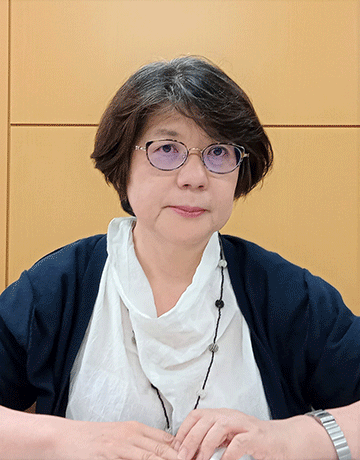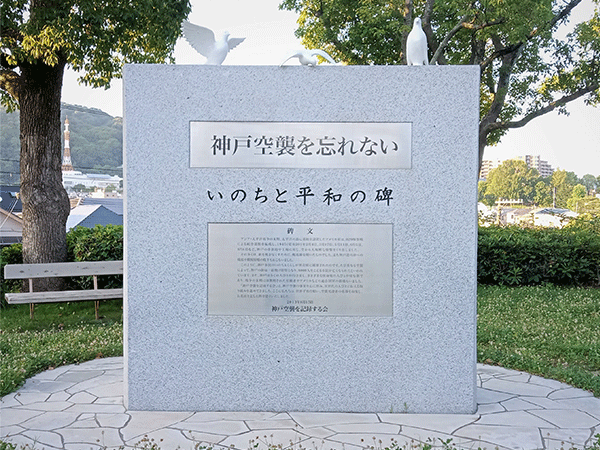
As the War in Ukraine drags on, Japan marks 78 years since the end of World War II. While tragedies are being repeated around the world, the generation that experienced the Pacific War is dwindling, and the inheritance of memories and records is becoming increasingly important. The city of Kobe was burned to the ground in massive air raids, and each of Kobe University's predecessor schools was severely damaged. What was happening in Kobe during the wartime and postwar confusion? We asked Professor OSA Shizue of the Graduate School of Intercultural Studies, who specializes in modern and contemporary history and is particularly knowledgeable about Japan's period of occupation, about the history of the Kobe region that has come to light in recent years and the significance of inheriting it.
Citizens' Movement to Document Air Raids
I would like to ask about the Great Kobe Air Raids that took place in March, May, and June of 1945. These air raids left Kobe in ruins and resulted in an estimated death toll of over 7,500 people. You have been working to pass on the records of the raids, haven't you?
Professor OSA: In Kobe, there is a citizens' group called "Association for Documenting the Air Raids Damages in Kobe" which was established in 1971. People such as those who experienced the air raids, bereaved families, and journalists have been collecting memoirs and records of them. Since both Kobe University and the university where I worked before are both located in Kobe, I wanted to know about the region's war experience in a comprehensive manner. However, at that time, organizations of the air raids records preservation movement did not have any connections with universities or research institutions throughout Japan, so it was difficult for me to understand their situations well. So I contacted them by myself directly and started to get involved in this activity seriously around the time of the 60th anniversary of the end of World War II (2005).
The air raids records preservation movement became gained momentum nationwide in the 1970s. Civilian casualties from war damages were excluded from compensation after the war unlike military personnel and their families. There were no comprehensive investigations by public administration either; therefore, it is still unknown how many people died then exactly. In the 1970s, a quarter of a century after the end of the war, people who had experienced the war felt a strong sense of crisis that the air raids, its damage, and the victims would be forgotten if nothing was done, which led to the collection and exhibition of records, publication of memoirs, and other activities. At that time, the Anti-Vietnam War Movements were also spreading in Japan.
In the 1980s, the movement demanded public permanent exhibition facilities from local governments and other entities across the country. In Kobe, the "War Damage Memorial Room" was temporarily opened in 1981 at the Kobe Chuo Municipal Library. However, due to the damage caused by the Great Hanshin-Awaji Earthquake in 1995, it was moved into the Hyogo Municipal Library. Since then, while some of the war damage materials has been on display there, it has not been updated and new achievements have not been incorporated. Especially in public libraries, there is no place where you can learn or investigate comprehensively about the war damage or air raids in Kobe, while it is common to have a special section for the Great Hanshin-Awaji Earthquake.
How do you convey memories and records of the war damage to the next generation, such as university students?
Professor OSA: In the repeated Kobe air raids, Kobe Technical College (now the Faculty of Engineering of Kobe University), the Kobe Nautical College (which was reorganized into the Kobe Branch of the Kobe Nautical College in April 1945, and now into the Faculty of Oceanology), and the Prefectural Technical College of Medicine (now the Faculty of Medicine) were destroyed by fire or damaged. A diary written by a 15-year-old male student in the preparatory course of the Hyogo Normal School (now the Faculty of Global Human Sciences), describes vividly the situation: his dormitory burned down, some senior students died, and he had to flee under the falling incendiary bombs.

In my classes at Kobe University, I introduce examples like this with the names of the places. I think that this encourages students from the local area to wonder "why didn't I know this until now?" and students from other areas to think about the war damage in their hometowns. If the high school one attended existed before the war, there may be records of student mobilization or memorials. Associating war damage with local place names brings the negative history of the past closer to home, making it feel as if it were about the students themselves. Recently, I feel that many students have started to think of war as a more immediate issue due to the outbreak of the War in Ukraine.
One of the most notable achievements of the Association for Documenting the Air Raids Damages in Kobe is the erection of the "Monument of Life and Peace", which is the cenotaph for the Kobe Air Raids, in Okurayama Park, Chuo Ward, Kobe in 2013. The monument is engraved with the names of those who lost their lives in the air raids. They had been collecting lists of the causalities, and by collecting and publishing photographs in the Kobe Shimbun newspaper called for the city's cooperation to "engrave the names of at least those who had been identified". The establishment of "Heiwa no Ishiji" (Cornerstone of Peace, in Itoman City, Okinawa Prefecture) in 1995 to engrave the names of people who died in the Battle of Okinawa had a significant impact on this. Creating a space to visualize the damage caused by the air raids in the form of the memorial monument is of great significance. Additional inscriptions are made every other year.
The reality of the "occupation period" does not follow the chronological entries
You are especially researching the occupation period of Japan. What was the condition of Kobe at that time?
Professor OSA: After the defeat in August 1945, many Western-style houses, buildings, and port facilities in Kobe were seized by the occupation forces. The bay area, prefectural government offices, etc. became their bases and camps for operational units were set up in the area around where JR Sannomiya Station and JR Kobe Station are located now. Kobe University's auditorium, swimming pool, and other facilities in Rokkodai were confiscated, and the area where the Rokkodai second campus is now located was developed for the occupation forces' family housing "Rokko Heights" at that time. They became the campus site for the comprehensive university later and were not returned until 1958. Japan's independence is said to have started with the enforcement of the 1952 Peace Treaty, but in reality, the occupation forces were replaced by the US military under the Japan-US Security Treaty and they continued to stay there. Periods such as "postwar" and "occupation period" are not as neatly delimited in fact as they are in the chronological entries.






